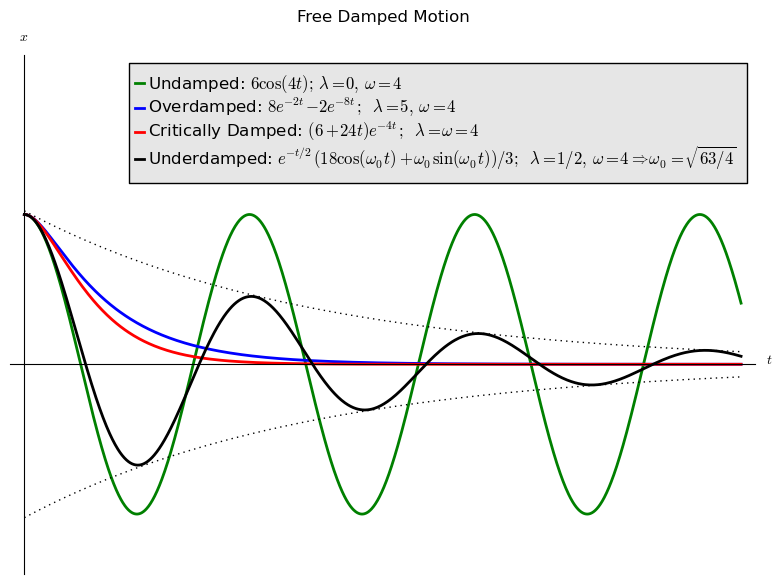Free damped motion of a mass m is modeled by the 2nd order ODE:

where x(t) is the distance from equilibrium, c is the damping constant and k is the spring constant. We divide by m and write:

where 2λ = c/m and ω2 = k/m. The qualitative nature of the solution depends on whether λ is greater than, equal to or less than ω.
Overdamped (λ > ω): The roots of the auxiliary equation are −λ ± (λ2 − ω2)½ and so the general solution is:

Critically Damped (λ = ω): The auxiliary equation has −λ as a repeated root and so the general solution is:

Underdamped (λ < ω): The roots of the auxiliary equation are the complex numbers −λ ± iω0 where ω0 = (ω2 − λ2)½ and so the general solution is:

Solution curves in the three cases and also the undamped case (c = 0) are shown below. These functions all satisfy the initial conditions x(0) = 6 and x'(0) = 0

Notice that the frequency in the underdamped case (ω0) is slightly less than in the undamped case (ω); we see this in the slightly longer wavelength in the underdamped case. The dotted black line is the "exponential envelop" ±(62 + (ω0/3)2)½e−t/2.
Images generated by sage.